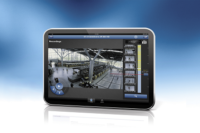As part of the SDM State of the Market series, SDM has great conversations with industry professionals who offer tremendous insight. Sadly, we just don’t have the space to share all their information. This interview with Tim Lyvers, co-founder and chief executive officer (CEO) of Advanced Digital Solutions LLC (ADS), Charlotte, N.C.,is an extension of the comments that were used in this year’s article, “State of the Market: Video Surveillance.”
Note: Lyvers is the cover dealer featured on the February print issue!
SDM: Looking ahead, how would you summarize the “State of the Market” for video surveillance systems and services in 2014?
Lyvers: ADS has always been centered around video security because we started out with a heavy focus in the gaming security market. We were a leader in helping clients convert their existing analog recording systems to digital recording systems. There were so many benefits with increased productivity that the costS were easy to justify. Our experience has helped us greatly as the market seems to be shifting to more video centric solution. With the constant improvements made in IP cameras and better video analytics, combined with better GUI's from video management systems (VMS) and PSIM manufacturers and more open architecture for integration to security sub-systems like access control, intrusion detection, etc, video surveillance is truly becoming the central nervous system of security.
SDM: How were your company’s sales of video surveillance systems and services in 2013 compared with 2012 — both in dollar volume and number of sales? How do you anticipate 2014 video sales to be?
Lyvers: Since 2009 we have been on a major growth pattern with 2012 and 2013 being our best years ever, averaging $12 million in sales. 2014 is already shaping up to be even better with $3.5 million hitting the books in January. The gaming market is highly regulated around video security and demands extreme reliability and immediate response when there is a system issue. You have to have a different mentality to support this type of customer. Everything gets treated as a Code Red if you will. We don't work around an hourly schedule but rather a task-driven schedule. We put the customer first and operate with a never fail attitude. We have found that bringing this same type of mentality to the commercial and government markets seems to be a welcomed change from some of their past experiences with other integrators.
Additionally, we have found success in our targeted markets by hiring seasoned veterans in those markets as our sales team. This gives us expertise in not only the best security technology for that market, but also how that markets customers can best utilize that technology throughout their business operations.
SDM: What market segments have been noticeably healthy customers of video surveillance? Among those customer segments, what is driving them to purchase video surveillance products, systems and services?
Lyvers: With gaming, as I stated earlier, it's all about regulation. They have to have video to ensure gaming isn't being manipulated by either patrons or operators. I am not sure anyone would purchase that many cameras if they didn't have to. Our job as the integrator is to provide the best return on investment possible by utilizing the technology available (analytics, higher resolution cameras, sub-system integrations, etc.). Beyond the regulation, gaming venues are often targets of false claims of slip and falls, vandalism, car damage via valet, etc., and video is often the judge and jury to those false claims. We have seen people actually beat themselves into a wall in a parking garage and walk into a casino saying they were just mugged, looking for the casino to pay them for the alleged money stolen. Needless to say, it didn't work out for them.
In our education and city center markets, it is more about security and situational awareness. It's about protecting students, civilians and enforcement agents. A properly designed video security system can quickly and effectively allow an observer to make more intelligent decisions because they have so much more information. Combined with proper sub systems like access control and mass notification, you are now talking about saving lives. Video can also just provide peace of mind as in the case of the female student walking across campus late at night and having the ability to request a video escort.
While really all markets appreciate the benefit of safety, our retail clients are also focused on loss of product or shrinkage. Video can provide a lot of value here, especially when monitored in real time.
SDM: What factors — either internal (your own company/industry) or external (nationwide/economy in general) — are currently having a positive influence on your company’s sales of video surveillance?
Lyvers: From an internal perspective, hiring veterans from within our target markets like Dale Dodd, who was an executive vice president in Gaming with 23 years of experience, and Steve Brown who is retired Special Forces from the Army for 23 years has certainly helped us gain market share and credibility. An expert engineering team lead by Todd Pulver has helped ADS and our sales team stay ahead of the technology curve which has further strengthened our position. Landing the Democratic National Convention in Charlotte also gave our company a big boost, especially in that region.
Externally, two things jump to mind. One, increased concerns of terrorism and increased crime rate obviously drive security sales. It never feels good to know you are getting a sale because of something bad that happened…but you try to focus on how your system is going to prevent something bad from happening in the future.
Two, Improved technology. Higher resolution cameras, cameras with better low light ability, more flexibility in video transmission, and more reliable analytics are just a few of the things adding real value and therefore justification for the purchase.
One factor that has proven to be sometimes a positive and sometimes a negative is the fact that many clients are now utilizing their IT department as the specifier or selector for the video security systems. There have been times when this worked great as IT staff tend to pick up on the technology quickly. There have been times however when they have assumed that video is simply data and treated it as such with regard to network design. A successful video deployment across a network can be very complex and it is better to rely on the guys that have done it than to be the guys learning the hard way how not to do it. Also, a successful system deployment requires that the IT department value the operational understanding an integrator has of how video and security in general will best serve the client. You can stick a camera anywhere, but why not put it in the optimum location to accomplish the desired goal?
SDM: Are there any technologies that are helping to boost video surveillance sales among your customers? How good of a job are manufacturers doing in helping your company increase sales?
Lyvers: Our engineering team works very hard to review all the products available and compare that to our customers’ needs to help mold the technological foundation of the company. We try not to sell everything but rather sale the best solutions for our clients/target market needs. We have carefully chosen our manufacturing partners carefully by not only their products but also how well them support them and how well they support us. In gaming especially, when they have a need, as I said before, it's almost always a code red. Our manufacturers need to react the same way we do. Our partners, like Samsung, Pelco, Synectics, Genetec and Next Level….just to name a few, do that for us. That reliability and speed certainly help us continue to gain market share.
HD cameras and video analytics seem to garner the most interest right out of the gate with customers. Part of this is because they are easy concepts to demonstrate and wrap your head around and of course the dramatization of technology that many TV shows and movies provide also helps. Where we try to differentiate ourselves once we have the customers’ attention is through high-level integrations centered around the customers’ business operations. Just recording video and waiting for something bad to happen is like buying an expensive smartphone and not using any apps…you're doing it wrong as they say. You're not maximizing your value. You are certainly not getting your ROI.





